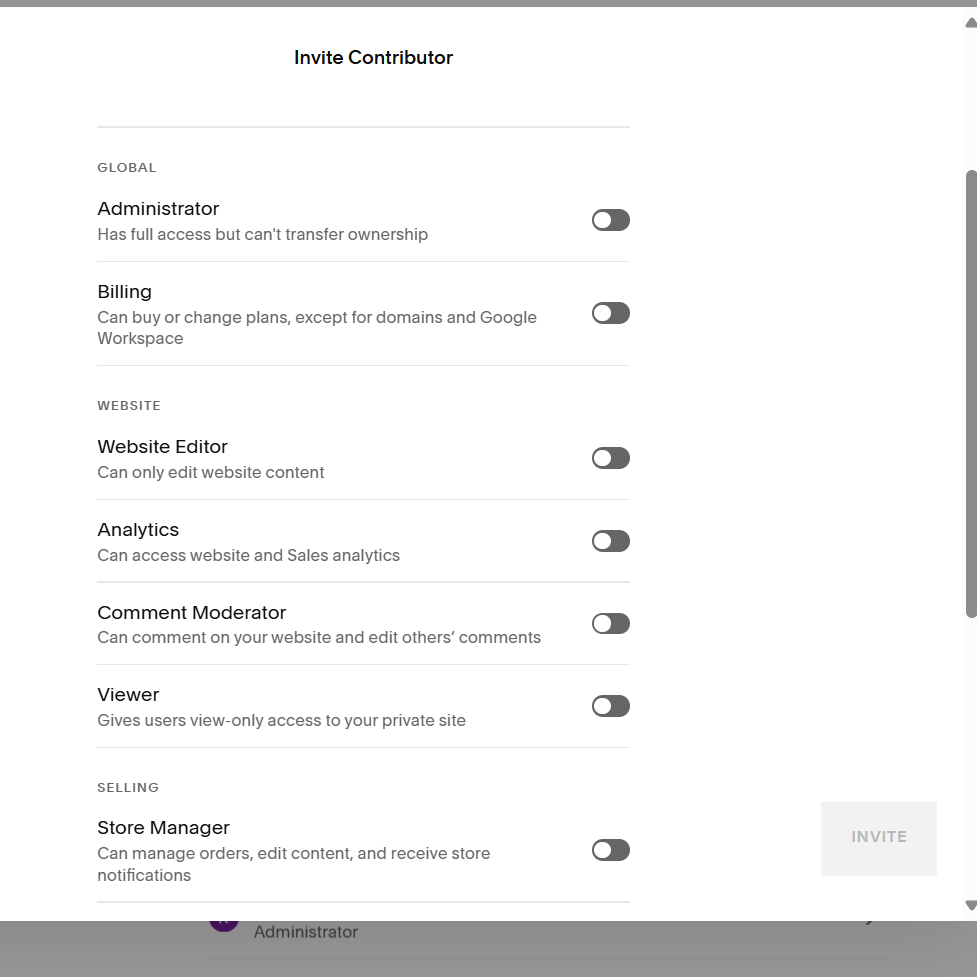How to Add User to Squarespace, Contributors, and Administrators
Managing a Squarespace website often involves collaboration—whether you're working with a designer, content writer, or business partner. Fortunately, Squarespace makes it easy to add users, assign contributor roles, and set administrator permissions. This guide explains how to invite team members securely and control what they can access.
Understanding Squarespace User Roles:
Before you add users to Squarespace, it’s important to understand the available roles:
Owner: Full access to everything, including billing and permissions
Administrator: Can manage content, settings, and contributors
Content Editor: Can edit pages and blog posts but not site-wide settings
Billing: Can view and manage billing only
Comment Moderator: Can manage blog comments
Store Manager: Can manage products, orders, and inventory
Basic Author: Can write blog posts but not publish or edit site content
Each contributor role has specific permissions, so choose based on what the user needs to do.
Step-by-Step: How to Add a User to Squarespace
1. Log into Your Squarespace Account
Go to your site dashboard
Make sure you’re logged in as the Owner or an Administrator—only these roles can invite others
2. Navigate to Permissions
Click Settings in the left-hand menu
Scroll down and select Permissions
Click Invite Contributor
3. Enter User Details
Add the contributor’s name and email address
Choose the appropriate role from the dropdown menu
Click Send Invite
Squarespace will email the user with an invitation to join your site. Once accepted, they’ll be able to log in and access the site based on the role you assigned.
4. Manage and Edit Roles
To change a user’s role later, return to Permissions
Click on the contributor’s name
Select a new role or remove access entirely
This is useful if someone’s responsibilities change or if you’re onboarding a new team member.
Best Practices for Adding Contributors
Limit access to only what’s needed—avoid giving admin rights unless necessary
Use separate accounts for each team member to track changes and maintain security
Review permissions quarterly to ensure roles still match responsibilities
Remove inactive users to keep your site secure and organized
Troubleshooting Access Issues
If a user doesn’t receive the invite, ask them to check spam folders
Make sure the email address is correct and linked to a Squarespace account
If issues persist, resend the invite or contact Squarespace support
Conclusion
Adding users to Squarespace—whether as contributors, administrators, or authors—is simple and secure. By assigning the right roles and managing permissions carefully, you can collaborate effectively without compromising control over your site.
Call to Action
Need help setting up your team or managing contributor access? Book a call with me to get a personalized walkthrough and best practices tailored to your Squarespace site.




